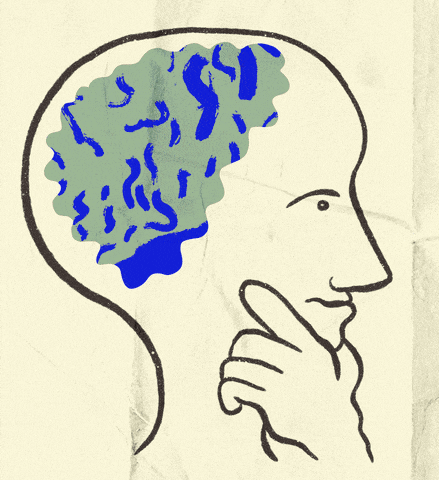
Optimizing patient acquisition through healthcare data analytics
How to optimize patient acquisition through Healthcare Data Analytics
We would all love to see into the future, right? Well, we can’t use a crystal ball, but by using data analytics we can forecast future outcomes to help with everyday business decisions. In advertising and marketing for healthcare, this means enhancing patient-acquisition strategy via data analytics.
In this post, we will discuss how healthcare data analytics can be used to forecast and predict consumer behaviors to help us decide how and where we will advertise our message. With COVID-19, it is more important now than ever for messages from healthcare providers to reach their target audiences. Predictive modeling can help both business-to-business and direct-to-consumer companies better target their ideal audiences.
Forecasting vs. predictive modeling: A quick comparison
While forecasting and predictive modeling work together, they are not the same thing.
Forecasting is typically done using historical data to predict a future value, which is helpful to marketers in predicting overall campaign conversions or performance. In healthcare data analytics, this could come to life as a forecast for the number of patient sign-ups or overall reach of an ad placement or campaign. Analytics forecasts are typically built on logic from known processes, benchmarks and other historical measures of performance.
In contrast to forecasting, predictive modeling is more complex and almost always less intuitive since it relies on “black box” machine-learning methods to generate predictions. Predictive modeling uses historical data and machine-learning algorithms to create probabilistic expectations about events. Using healthcare data analytics for marketing, we might apply predictive modeling to predict consumer media behaviors – or even the likelihood that a person would need a certain type of medical care in the next year.

Ways to use forecasting and predictive modeling for advertising optimization
Audience segmentation
Our first example of predictive modeling in healthcare data analytics is audience segmentation. Marketing always starts with the target audience, but this is generally a very broad group of people. Audience segmentation analytics allows marketers to get much more specific with their targeting.
From the broad target audience, segmentation uses data points such as demographics, interests and past digital interactions to find patterns among consumers. Based on these patterns, the predictive modeling algorithm can create audience segments that are optimized for targeting. The resulting segments are subset audiences within your target audience that further group people based on similar habits or interests.
The example below shows how the total target audience or user pool can be broken down into segments based on the current value of its members to the business as well as their potential value in the future. In healthcare data analytics, for example, predictive modeling can segment users based on their current healthcare usage, frequency of use and the monetary value of their needed services. However, it’s up to analysts to interpret the outputs of the segmentation model and translate them into actionable insights because user segments can mean different things for different businesses.
 Image source: https://towardsdatascience.com/
Image source: https://towardsdatascience.com/To optimize an advertising campaign based on audience segmentation, data visualization may help tell the story within the data. For example, in the chart above, the green smiley face may represent the best prospective patients for a hospital or healthcare provider. This segment might be made up of people who are highly aware of the provider and frequently use its services. However, it could be the case that the people most in need of a specific healthcare service don’t currently know they will soon need the service. In this case, the most important consumer segment to target may be a segment with low awareness and high potential value.
A deep dive on the segmentation results by an analyst can help bring the results to life and lead to campaign strategy optimizations to bring in new high-value patients effectively.
Optimizing advertising content
Based on the audience segments we’ve developed, we can determine which types of media channels or messaging will resonate best with a certain group.
For example, we may find a group that responds better to social media ads than display ads. We can then adjust our strategy to push more social ads to this specific segment of our audience.
But we can go even deeper than type. We can forecast what time of day or year is best to serve ads and how many times someone needs to be exposed to your brand before they make a conversion.
February was heart health month, so healthcare predictive analytics along with historical time series data can tell us when heart health messaging should start and when our target audience is most susceptible to hearing our message.
Bring in new customers and keep existing customers
What’s a business without users, right? Well, predictive modeling can help identify potential new users as well as help sell more products or services to existing users. We can identify which consumers are further down the purchase funnel than others and target ads specifically to help push them toward a conversion, which could be a purchase, appointment or email sign-up.
Studying behaviors of current users can lead to determining what other services users may be interested in using. Acquiring new users is important, but analytics can also help you make sure your current users will be returning users.
In healthcare, it is important to bring users in for a first appointment and keep them coming back for more. You want people to use your services for essential and non-essential healthcare needs or for healthcare providers to keep using your products again and again.
Overall predictive modeling can help by not only identifying differences in your audience, but also by identifying the best way to target based on those differences to bring more people down the conversion funnel. It’s about pooling your data resources together so insights we gather will be well-rounded and informed.
Liked what you read? Discover how Doe-Anderson Research & Analytics can help optimize your brand.
)
)